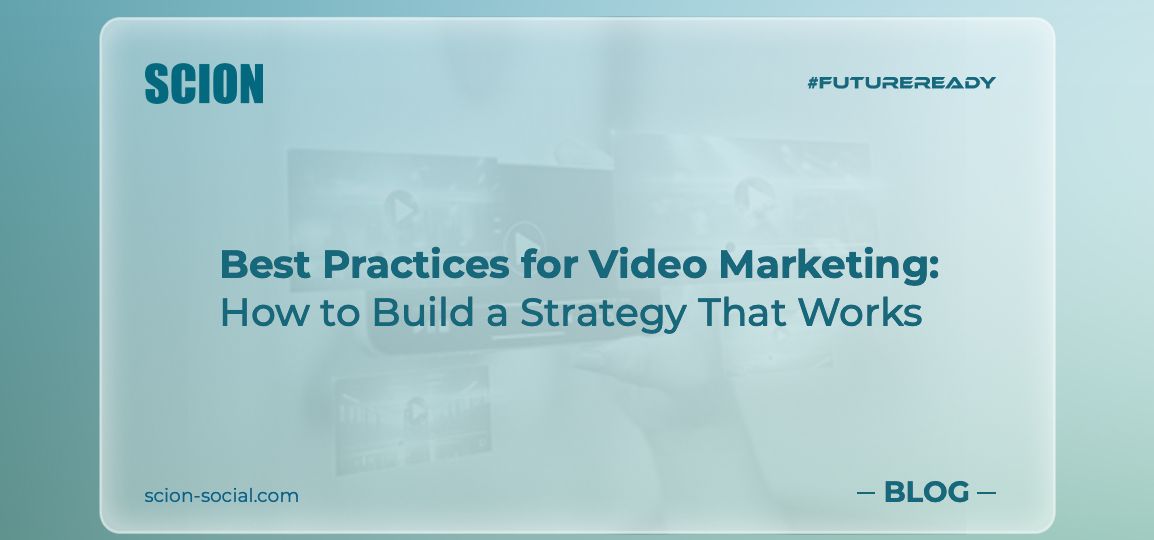
Video marketing is fast becoming the most important tool a brand can leverage to reach new audiences, engage with users, and drive new leads. With 89% of businesses today utilizing video, and 95% of marketers considering video integral to their marketing strategy, it’s never been more important for brands to take advantage of it.
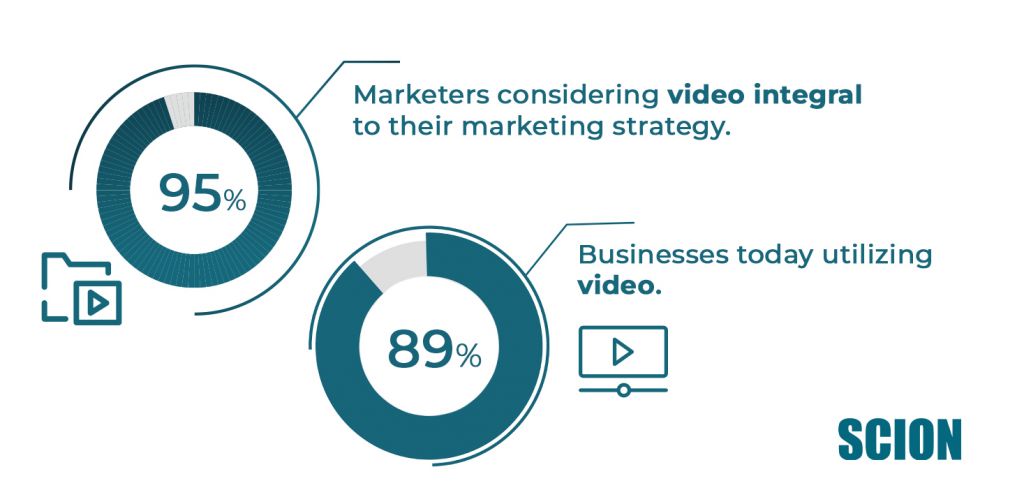
In this blog, we’ll dive into the details of:
- What video marketing is and how to get started
- Best practices for video marketing
- Building a video marketing strategy that works for you
What is Video Marketing?
Video marketing is a dynamic strategy used by businesses to promote their products and services or spread brand awareness. Businesses can use video marketing as a standalone marketing strategy or combine it with other strategies and campaigns. For example, you could use video marketing to promote existing content, such as blog posts or testimonials in a way that will visually appeal to and capture the attention of prospective customers.
Video provides users who are overwhelmed by textual information and sales pitches with a visually and emotionally engaging way to connect with a business. In this way it helps brands increase awareness, boost conversions, and enhance customer engagement.
Why Video Marketing Works: The Power of Visual Storytelling
Humans are visual creatures. We love stories, and we love to see them come to life. Ask yourself if you would rather watch a 2-minute video over reading a 1,000-word article, and it’s easy to understand why video marketing is so effective.
Video marketing is simply more engaging than other types of marketing. Whether the emotion being evoked is happiness, humor, hope, curiosity, or even shock and surprise, video is that much more memorable – and more importantly, shareable. If you’ve seen videos go viral, it will help you understand the incredible impact this kind of marketing can have.
Here are just a few of the elements that drive video marketing success:
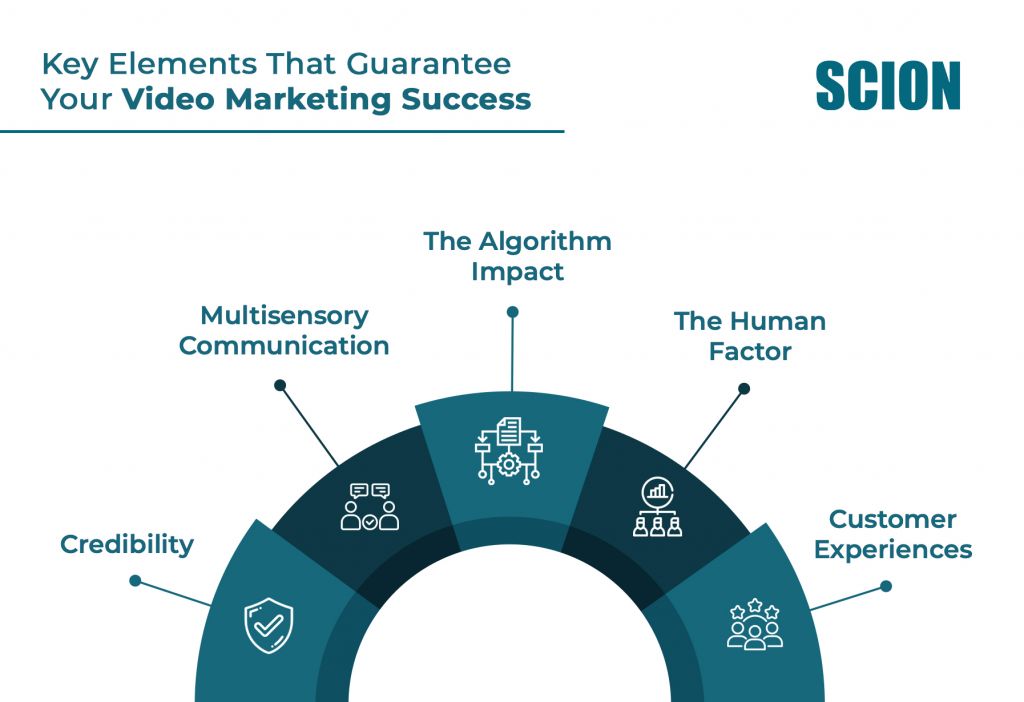
- Credibility: The Trust Factor: Most prospective customers are not just looking for their next great buy. They’re looking for a company that aligns with their own beliefs and purpose. Video marketing helps businesses be more authentic by putting a face to the brand, providing behind-the-scenes information, and conveying their mission and values. All of this can help your prospective audience relate to your brand on a personal level, enhancing your credibility and building true customer loyalty.
- Multisensory Communication: Users will generally retain 95% of a message seen on video as opposed to only 10% that they read in text. Appealing to more than one sense at a time is a highly effective way to communicate. Through video, your audience can watch, listen, read, and interact with your message. This gives them a 360–degree feel of your product or service and how it could positively impact them.
- The Algorithm Impact: Driven by increased consumer demand for video content, social media platforms are investing heavily in it.
- Instagram prioritizes video content in their users’ feeds – the algorithm actually rewards you for posting a video instead of an image.
- Instagram and TikTok algorithms suggest videos to users based on their preferences and viewing history – they will literally find your target audience for you.
- YouTube Shorts appeal to a wider audience, targeting viewers who prefer fast-paced experiences and increasing your views. Shorts can now be up to three minutes long.
- Instagram and Facebook both allow live video. This enables your viewers to engage with you in real time, increasing customer loyalty.
- LinkedIn is getting on the bandwagon too. With short-form videos generating significantly more engagement than other content types, LinkedIn has been trialling a dedicated video tab to increase reach and engagement.
- The Human Factor: The fact is that people do business with people and always will. Video marketing is a great way to align yourself with your customers on belief systems and why you do what you do. This alignment creates a feeling of true connection, which is so often the catalyst for customer loyalty
- Customer Experiences: Stories from your existing customers build confidence in prospective customers. We know that word of mouth is the most effective form of advertising, and if you’re not hearing it directly from someone you trust, video testimonials are the next best thing.
How to Get Started with Video Marketing
Now that you know why video marketing could be the most effective tool in your brand’s arsenal, let’s get into the details of how to get started.
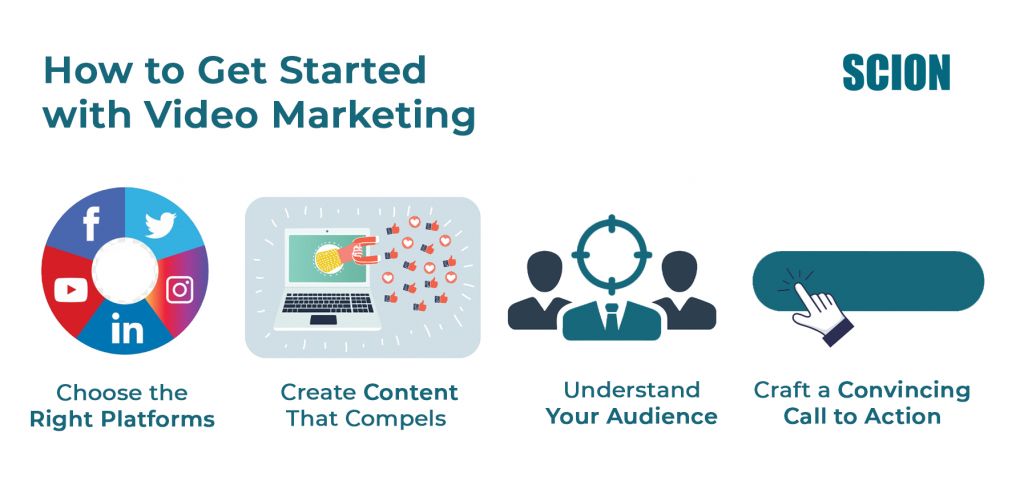
Understand Your Audience: Who are you talking to and targeting? Do you understand their interests, challenges, and pain points? Tailoring your content to address these elements will increase your chances of keeping your target audience engaged.
Choose the Right Platforms: Businesses that try to succeed on every social platform are, in most cases, their own worst enemy. Rather than trying to be present on every platform, take the time to research which platforms your target audience is most active on. Focusing only on these platforms will enable you to craft a video strategy that appeals to them.
Create Content That Compels: In today’s digital age, consumers’ attention spans are shorter than ever. Though there is certainly a place for longer video content, shorter videos of around 30-45 seconds are what capture the interest of most viewers today. You can stil utilize your longer-form content by cutting it down into bite-sized pieces that can stand alone in separate videos.
Craft a Convincing Call to Action: A truly compelling CTA is a strategic blend of audience psychology and marketing savvy. It inspires action, whether through a feeling of curiosity, urgency, enthusiasm, or FOMO. Make sure that your chosen CTA is clear, specific, and offers value to your target audience.
How to Make a Successful Marketing Video
A successful marketing video creates an emotional connection with the viewer. It may make them feel like you relate to them, understand them, or align with them. They may feel seen, or like they’ve finally found a solution to a challenging situation. Let’s get into the key elements of videos that convert consumers into clients.
Storytelling:
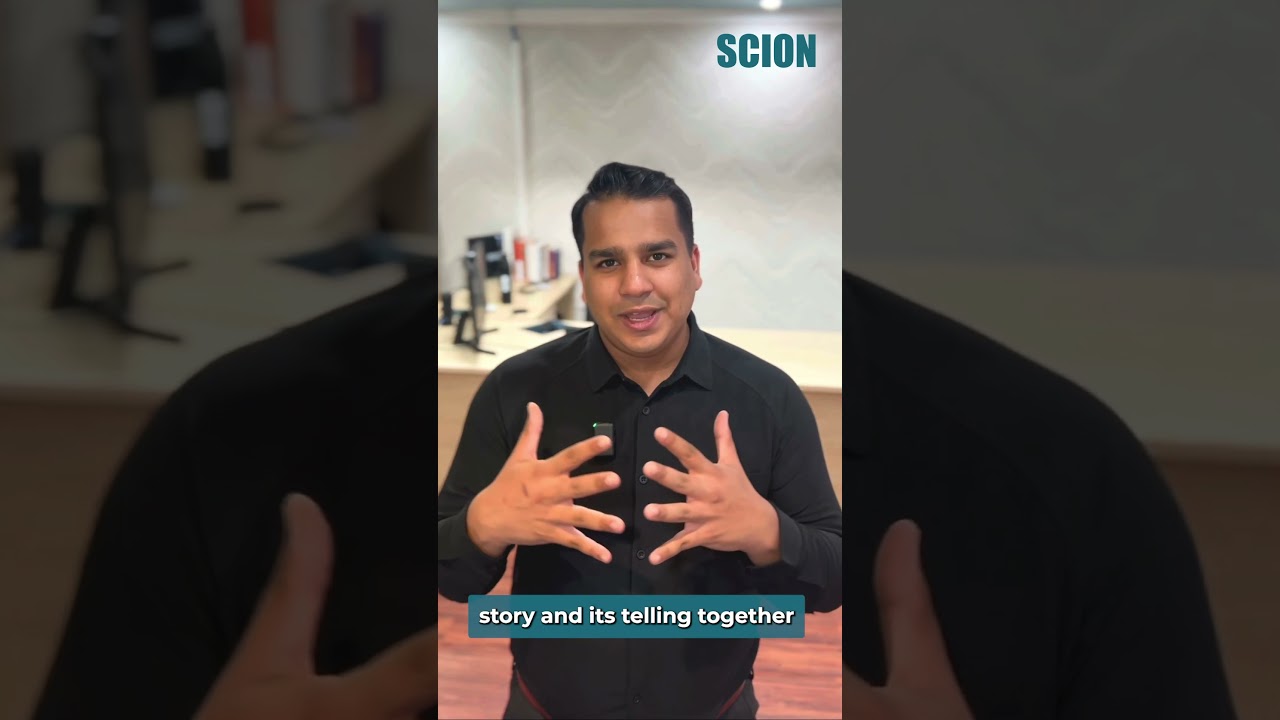
Storytelling in marketing goes far beyond selling a product; it’s about creating an emotional connection with company decision-makers. The best brand storytelling videos take the viewer on a journey that ends with a clear and memorable message.
A Strong Hook:
The general rule of video marketing is that you have three seconds to command the viewer’s attention. This means that your video should open with a compelling message, whether that’s a surprising statistic, question, or statement that addresses your audience’s pain points.
It’s important to note, however, that the hook is not clickbait. In fact, it’s the opposite. Your hook should compel viewers to keep watching, letting them know that staying through the entire video will be rewarding or valuable for them.
Using Influencers & Collaborations
Identifying the right influencer for your business niche can add a lot of credibility and win you more new customers. It’s all about finding out who your target audience is listening to and leveraging their influence to drive growth for your brand.
The Instagram ‘Collaboration’ feature is yet another effective tool to reach new audiences. This allows you to incorporate new faces, add credible industry voices, and sprinkle more variety into your video content. Plus, a collaboration appears not only in your followers’ feeds, but in the follower feeds of the collaborative account as well, which can get your content in front of thousands of new viewers.
High-Quality Production:
This is not the time or place to skimp on quality. Investing in quality equipment and editing software is well worth it to ensure that your videos look and sound like the professional brand or company you are.


Instant Website Grader
Get your website score in seconds
Find out how you can improve it, for free!
PERFORMANCE
SEO
MOBILE
SECURITY
Other Factors to Consider
Variety Adds Spice
Even if your content is high quality, your viewers will get bored of seeing the same thing over and over. Experiment with different formats to see what your audience engages with the most. This could include product demos, explainer videos, testimonials, behind-the-scenes footage, and much more. Sharing stories from your existing customers can increase trust and boost conversion rates by 58%, as viewers increasingly value genuine user experiences.
Visual Conventions & Accessibility
Accessible video content allows everyone, including those who are differently-abled to engage with your brand effectively. Features such as closed captions, audio descriptions, and transcripts make your videos more inclusive. Well placed copy can also make all the difference. Use short and sweet titles, incorporate subtitles, and add transitions to improve the viewing experience for your audience.
SEO Matters
SEO-optimized videos can make your content 53 times more likely to appear on Google’s first page. Make sure you’re reaching your intended audience and appeasing the algorithm gods by optimizing your video SEO through relevant keywords, descriptions, and tags.
Mobile Optimization
Making sure your videos are mobile-friendly and easily accessible from any device is important. A video that looks great on desktop but doesn’t convert well on a mobile phone or tablet can result in decreased views – and that’s the last thing you want.
Trends are Trending for a Reason
Videos go viral for a number of reasons, but trends can help you get closer to that holy grail. Instagram and TikTok are two platforms where trends can help you grow your audience and increase your engagement. Keep in mind, though, that you should only choose trends that align with your brand’s character, values, vision, and purpose.
Tips for Video Marketing
Keeping in mind all the above, here are some additional tips to help you create outstanding video content that converts.
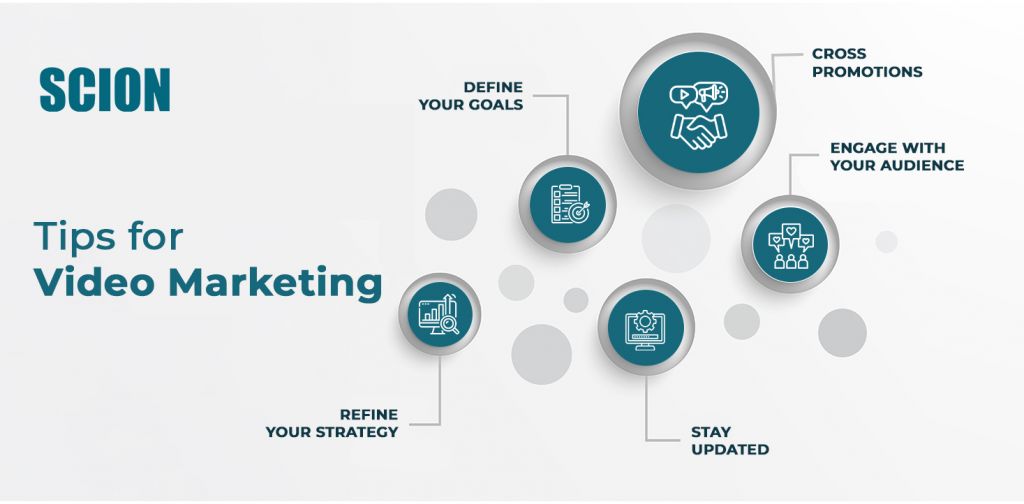
Cross Promotion: Once you’ve created a great video, you can help it go further by promoting it on various channels including your website, social media platforms, and marketing emails.
Advertising: If you find that a video you’ve created is performing exceptionally well, you can make the most of its appeal and get it in front of new audiences by boosting it via paid advertising on Meta, LinkedIn, or YouTube.
Define Your Goals: Set SMART goals for your video marketing campaigns. These should be:
- Specific
- Measurable
- Achievable
- Relevant
- Time-bound
Refine Your Strategy: Creating an effective video strategy is not a one-time thing. Over the course of each campaign, you’ll need to analyze what’s working and what’s not. Aim to continually craft and adapt your strategy to see what your audience is engaging with.
Use Thumbnails Effectively: A good thumbnail can have a big impact on a video’s performance. Make sure yours is visually compelling and that it provides top-level information at a glance.
Engage with Your Audience: Don’t just post and forget about it. Replying to comments and engaging with your viewers is a great way to build a connection with them. If someone shares your video,
reach out to thank them for their support. Resharing content that mentions your business is also a great way to increase customer loyalty.
Stay Updated: Digital marketing is an ever-changing landscape, and video marketing is no different. Trends will emerge, rise, and fall. Always keep your finger on the pulse of the latest best practices to ensure your videos consistently hit their mark.
Find out more about how you can increase your views on YouTube in this blog.
With the tips above, you now have the insights you need to creating a powerful video marketing strategy and become a video marketing expert. But if you need any extra help, our Scion team is here for you. We’ll help you create a compelling strategy that captures attention, increases engagement, and encourages your viewers to take action!
FAQ’s
Digital marketing is an umbrella term for the various strategies used to promote a brand online. These include SEO, content marketing, social media marketing, email marketing, and PPC (pay-per-click) advertising. Video marketing on the other hand, is a specialized approach that leverages video content to engage and convert audiences through visually and emotionally compelling storytelling.
The potential that video marketing holds to create brand awareness and engage customers is unrivalled by any other kind of marketing. It impacts your reach, increases conversions and sales, and enables you to create a genuine emotional connection with potential customers.
There are many benefits to video marketing, including:
- Enhancing your SEO
- Building brand awareness
- Increasing your engagement
- Building trust and credibility
- Increasing your conversion rates
- Encouraging viewers to share
- Improving your Google rankings
Videos capture audience attention more effectively than text or images. As most users are much more likely to watch a video than read a lengthy article, this holds their attention for longer. In fact, including a video on your landing page can increase conversion rates by over 80%.
Yes it is, and here’s why!
- YouTube has 2.5 billion users worldwide – that’s approximately 32% of the global population and 50% of internet users in the world
- YouTube is the second-largest search engine on the planet, second only to Google
- YouTube is the world’s largest video hosting platform, controlling 78.50% of the market share worldwide
- YouTube Shorts receive over 70 billion daily views
